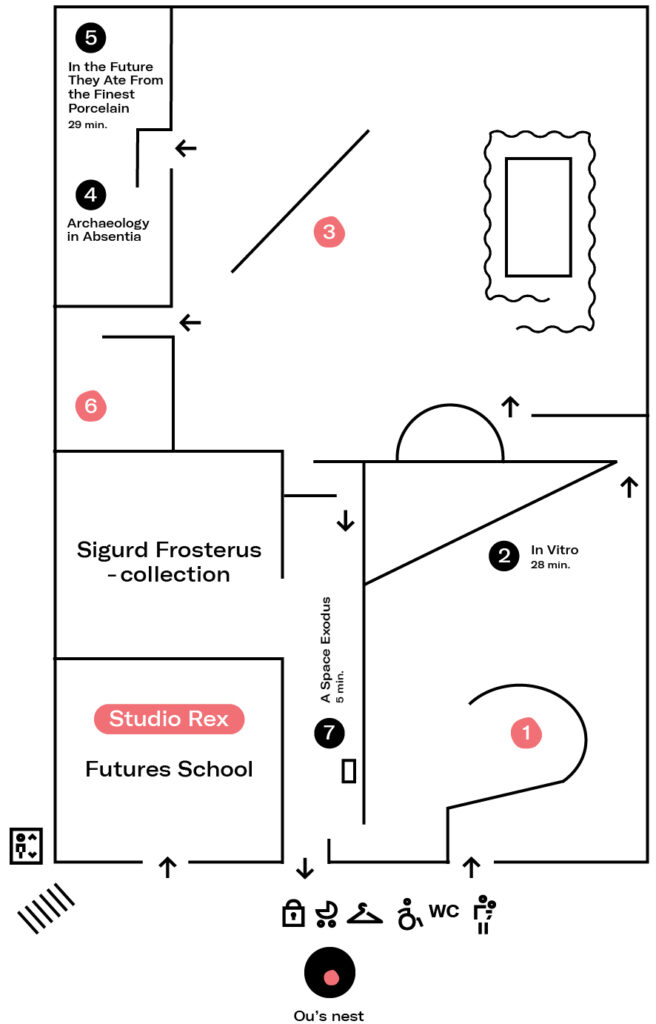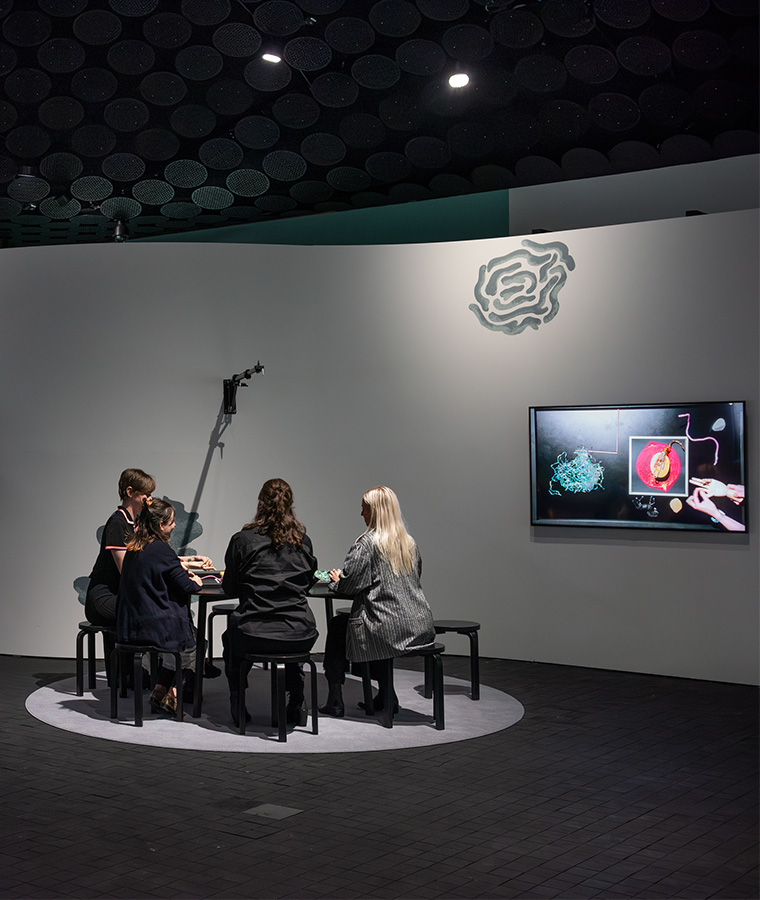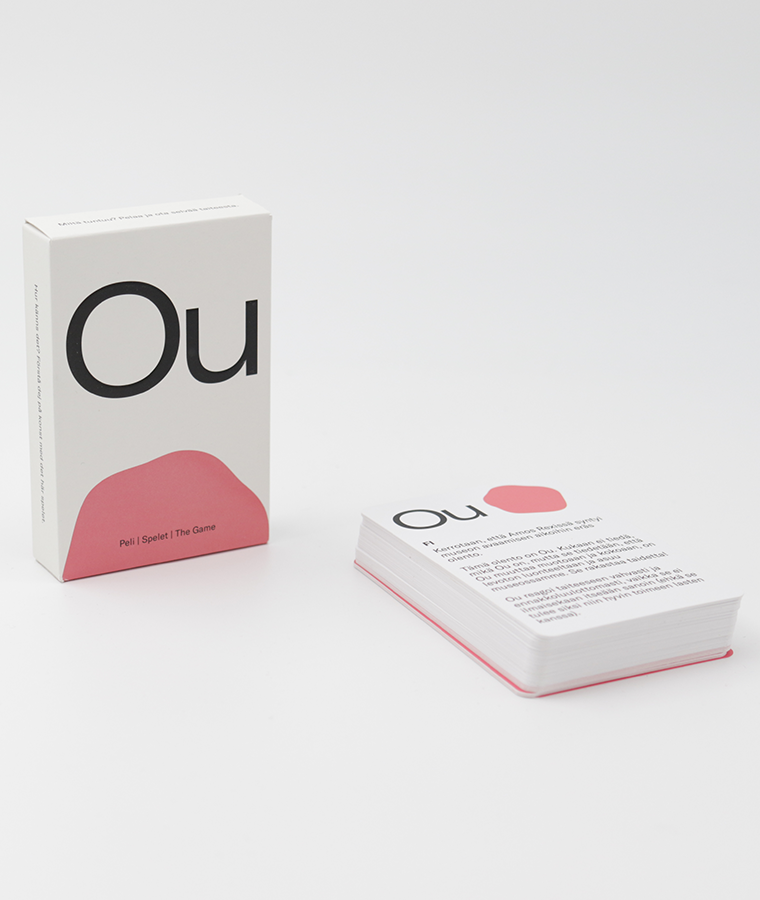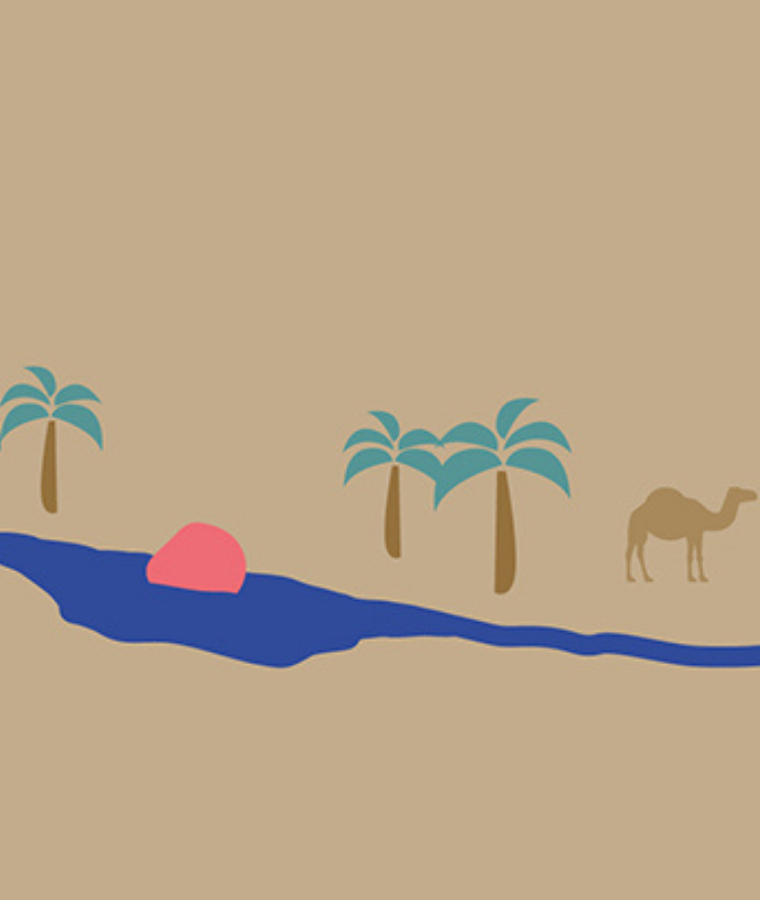This page is for children and those visiting the museum with a child. Read it, perhaps together, before your visit!
Pssst, teachers and pedagogues, our pages tailored to schools and other visiting groups are over here: Services for schools and preschools
Meet Ou. Ou likes children, for they often understand it better than grown-ups. You see, it is sometimes difficult for Ou to control its feelings, not to mention energy.
At the museum
Arrival
The museum’s main entrance is in the Lasipalatsi (glass palace) building, on the Mannerheimintie side. An accessible entrance is located on Lasipalatsi Square’s side of the building.
Everyone under 18 years of age gets free admission. Ticket counters are at the museum’s main entrance and in the museum shop, closer to the accessible door and elevators.
 |
Space for keeping some baby carriages can be found at the end of the storage lockers in the cloakroom. Baby carriages can, however, be taken into the exhibitions. Strollers can also be borrowed, if needed, at the cloakroom. |
 |
A childcare station is available next to the cloakroom. |
 |
Breast-feeding is allowed anywhere in the museum. |
 |
Ear protectors for children can also be borrowed at the cloakroom. |
A museum’s main task is to care for the artworks so that they can be preserved intact forever. Museums also have rules, which must be obeyed so that everyone’s visit can be as pleasant as possible.
Important things to remember throughout your visit:
- The artworks must not be touched, not even by a little tap of the finger, unless it is clearly stated otherwise. This is because they could be damaged, dirtied or corroded. Did you know that the natural grease on our fingertips can, for instance, leave a mark on a hard bronze sculpture that can never be cleaned off? Even if nothing at first can be perceived with the naked eye.
- A good distance must be kept between yourself and the artworks, even if you would like to get a close look. Just think, even someone stumbling or sneezing could harm an artwork. It’s good to keep a distance to avoid any accidents.
- Visitors must walk through the museum calmly. You can be excited, but must not run. That’s because if you ran, you could trip and fall, and thereby damage irreplaceable cultural treasures.
- You certainly don’t need to be silent in the museum. Discuss the art, debate, share your opinions! But we ask that you take the other visitors into consideration, so that everyone has a pleasant museum visit.
- Emotions are allowed in the museum. If you feel like laughing, laugh, and if you feel like crying, that’s OK too.
And finally:
You must obey any instructions given by the museum staff. They are really nice people, and there’s no need to be shy of them. You can ask the museum staff all kinds of things, they know the museum inside out. On hand are also special guides whose job is to discuss with you – about the art or something else entirely. You will recognize the museum staff by their lavender coloured jackets!
Larissa Sansour

Larissa Sansour
9 October 2024 – 2 March 2025
In art, we are free to imagine the most peculiar things! What if saucers suddenly started to rain down from the sky? What if entire cities and all their inhabitants were moved to live in a huge skyscraper? Amos Rex is showing an exhibition by Palestinian-Danish artist Larissa Sansour, in which imaginary worlds are mingled with real events.
There are five films, two sculptural works and one installation on display. The stories told in the artworks feature real and imaginary people who reminisce about past times and dream of the future. One person flies to the moon, someone else waters an olive tree, another sings opera. Many of them experience grief and loss. And isn’t it so, that art makes space for all kinds of feelings.
Larissa Sansour has had to deal with grief and loss in her own life, too. She was born in Palestine, a country that has long been troubled by, among other things, war. Over the past hundred years, most Palestinians have had to flee their homes, many have still not been able to return. Through art, Sansour considers how life might continue even under very difficult circumstances. She imagines what the future might look like if we had more, different ways of understanding the world around us than what we do now.
Please note that it is dark in the exhibition halls. In some places, there are sounds that you may find exciting or perplexing. Read more about the exhibition to assess whether it is suitable for you:

Children's map
The Larissa Sansour exhibition is like an adventure into possible worlds and futures!
… But the works also include images and sounds that can sometimes feel exciting or perplexing. We encourage you to talk about the feelings that art evokes! In the exhibition halls, there are discussion guides dressed in lilac jackets ![]() who are always available to chat.
who are always available to chat.
Tips for the map:
1. Monument for Lost Time
What is going on! What is this you’re facing, could it be the entrance to a dark tunnel, or has the sun gone out and fallen into the museum? Try to look through half-closed eyes. You may notice that the darkness sharpens all your senses. What kind of sounds can you hear? What is happening in your thoughts?
You must be very attentive now if you want to see the art! Can you distinguish the work from the darkness, can you tell what shape it is? You may also notice that the darkness sharpens your other senses. What kind of sounds can you hear? Do you sense anything else?
2. As If No Misfortune
Emotions come and go, and none of them are “right” or “wrong”. But can emotions be of a certain colour? In the artist’s native Palestine, indigo blue is the colour of sorrow. How are you feeling right now? What colour would you give to your feeling?
3. Nation Estate
In this work, the artist imagines what it would be like to live in a huge skyscraper where each floor contains an entire city. What do you think the homes of the future might look like? What would you see through the windows?
4. Studio Rex
The Futures School has taken over the museum’s art workshop space and you’re invited to join in a journey of exploration into alternative futures. What will the future feel like: soft or angular, shiny or sparkly? What colour or shape will it be, and could there be many different futures? Come and give it a try!
How do you talk about art and emotions?
Art can evoke a wide range of thoughts and emotions, from excitement to laughter to sadness. Nothing is too small or big to talk about! We encourage you to talk about anything, both the nice things and the not so nice things. A good way to start is to locate different feelings in your body: maybe an itch in the pit of your stomach while watching a videowork, or maybe your legs wanting to run away from strange echoing noises? One person may be delighted by a work of art and another disgusted – that’s what makes art so interesting! In the museum you’ll see a team of discussion guides in lilac jackets, and you are always welcome to tug their sleeve if you want to ask more questions or need tips for your visit.
If you’re an adult visiting with a child, and you feel you need support on how to talk about the most difficult topics with your child, we recommend the online resources from the Mannerheim League for Child Welfare, Save the Children and Pikkujätti.
You can also check out our toolkit for teachers:
Exhibition brochure
Larissa Sansour’s works are meant to be seen in the dark, which is why there is no text to read in the exhibition halls. If you want to know more about the artist and her artwork, you can take a look at the exhibition brochure. It is worth reading the exhibition brochure together with an adult. You can find the brochure either in the underground lobby, in the Studio Rex workshop space, or online.
Studio Rex

Futures School
What does a desirable future feel like: soft or spikey, shiny or crinkly? And what does an undesirable future look like – what colour or shape is it?
The Children and Youth Foundation’s Futures School invites you to Studio Rex, where you can explore alternative futures and boost your ability to imagine a better tomorrow. In the space created in collaboration with Amos Rex everyone is welcome to challenge their own creativity and to construct film stills of imagined futures, their own or the world’s. The activities are built around critical futures thinking, and are primarily aimed at children from lower secondary school to adults – but you can construct film stills at any age!
In art, we are free to explore all kinds of thoughts and feelings, and there are no right or wrong answers.
Ou
Send your regards to Ou!
Have you made your own sightings of Ou in the museum? A tip: at least one place that Ou can almost certainly be found is in the museum’s cloakroom, where Ou has built a nest.
Tell us about your findings!

Ou's card game
Ponder art with Ou!
How does it feel? A game for figuring out art.
The Ou card game is perfect for those who want to talk about art and how it feels – but need a little inspiration! Play it at an art exhibition or take it outside and beyond the museum space.
Ou's tour

Follow Ou on kids’ own guided art tours.


